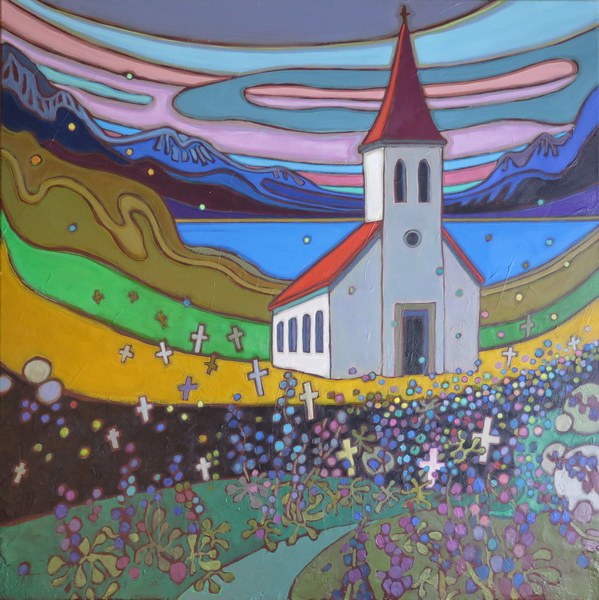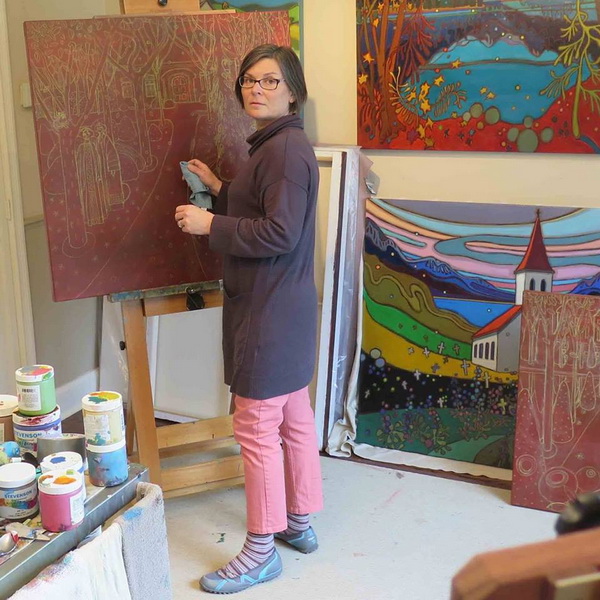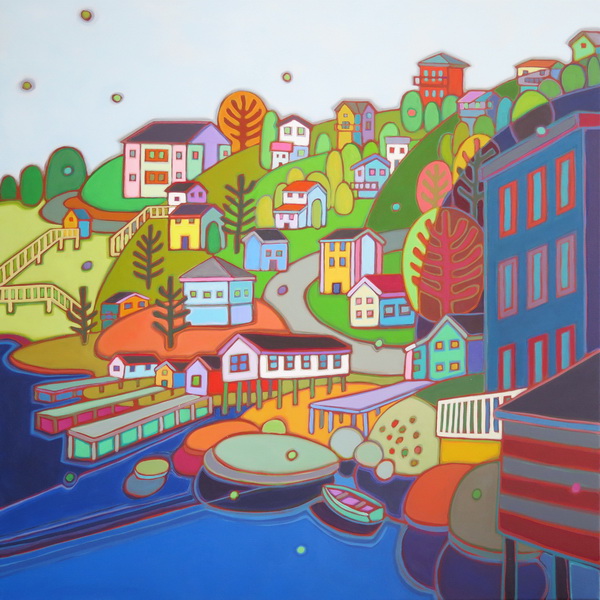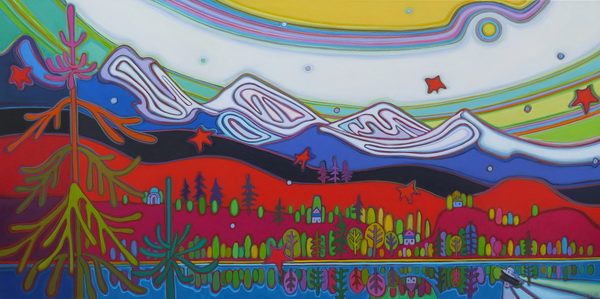Friday Night Club November 2 – Darlene Kulig
(Submitted by Ingrid Mueller)
DVAC was lucky to find Darlene Kulig to fill a cancellation, as it was an insightful evening with a very talented artist.
Darlene Kulig was awarded the CSEA/Berol Prismacolour National Art Scholarship awarded to six Canadian students entering Fine Arts based on outstanding potential in visual arts.
Graduating from the Ontario College of Art and Design she quickly moved into a commercial setting and within four years of graduating was running her own successful design studio.
Darlene began painting full time ten years ago. Her work utilizes synthesis or stylization – an approach that came into Eurocentric art from Japan in the mid 1800’s. Many of Canada’s great landscape painters (Lawren Harris being an obvious example) have done this. Darlene makes her approach her own by using strong (high key) colour and uniting smaller shapes into larger more powerful areas by controlling her values. Her love of the beauty available in the Canadian landscape is clear. What is especially impressive is that she has developed a unique very personal approach that “feels” Canadian. (Kulig website)
She describes her work as semi-abstracted spirited landscapes.
From her artist statement: “The designer in me loves simple shape and bold colour while the painter in me explores light, rhythm and personal connection. I continue to play with a careful balance between my intellectual and intuitive self.”
We were very fortunate to have Darlene share a few of her secrets to creating such striking landscapes:
1. Work with negative space. Don’t paint things, paint the difference between things.
2. Pay attention to the elements of design: colour, line, shape, value and intensity
3. Don’t worry so much about the colours you use, just as long as the values are right
4. Review your work checking things like: unity, harmony, balance, repetition and transition.
Darlene shared her biggest secret as to how she attains that great distinction between the shapes in her paintings.
She starts with a sienna underpainting. She then uses a pastel stick (green) to create the lines between her shapes. After painting the shapes she erases the chalk lines. The result is an equal, balanced outline between the shapes in her landscapes. The result both draws the entire painting together with the sienna line, but distinguishes the shapes. A remarkable, signature style Darlene has developed.
Currently, Darlene is focusing her creative efforts full time on developing a recognhttps://www.facebook.com/Kuligart/izable, signature Kulig Canadian landscape as well as traveling with an eye for her next painting series. A member of the Etobicoke Art Group and Neilson Park Creative Centre where she studies and paints, you can find her work in galleries across Canada and the United States as well as private collections around the world.
You may see more work by Darlene Kulig at:




